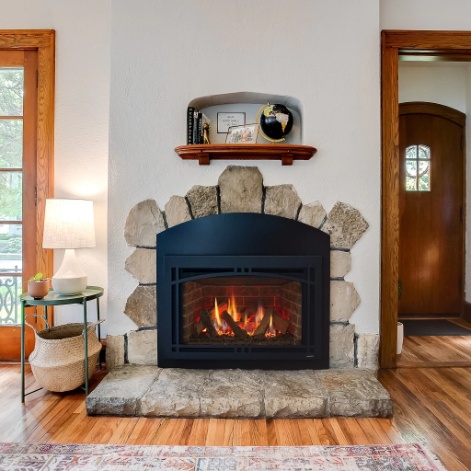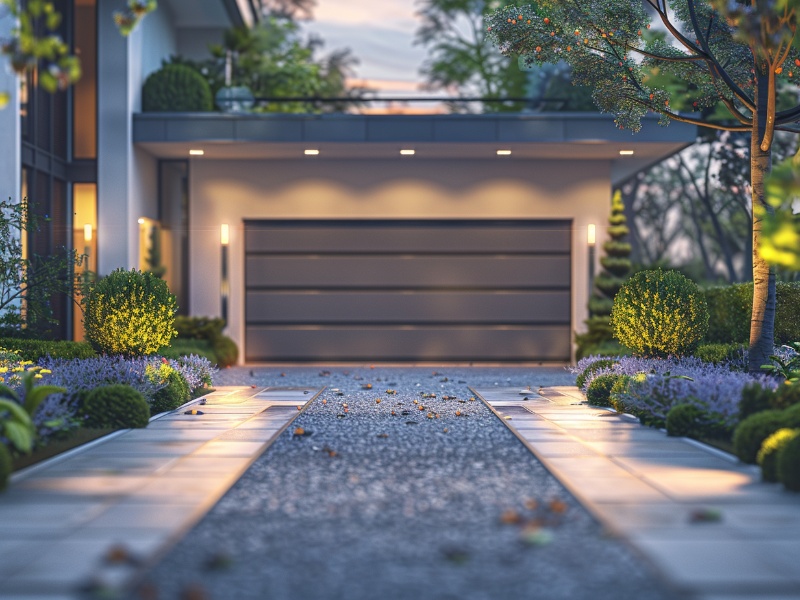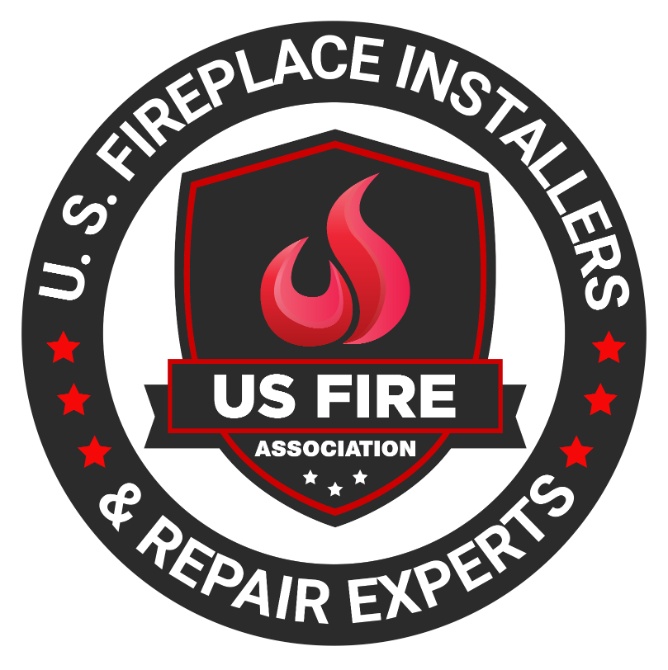Table of Contents
- 1 Is It Safe to Sleep in a Room with a Fireplace?
- 2 What Are the Risks of Sleeping in a Room with a Fireplace?
- 3 What Precautions Should Be Taken Before Sleeping in a Room with a Fireplace?
- 4 What Are the Alternatives to Sleeping in a Room with a Fireplace?
- 5 Can Sleeping in a Room with a Fireplace Affect Your Health?
- 6 Frequently Asked Questions
Are you wondering if it’s safe to sleep in a room with a fireplace?
We explore the risks associated with sleeping in a room with a fireplace, such as carbon monoxide poisoning, fire hazards, and poor air quality.
We also discuss precautions that should be taken before sleeping in a room with a fireplace, as well as alternative heating options.
Find out how sleeping in a room with a fireplace can potentially affect your health.
Learn more by staying tuned!
Is It Safe to Sleep in a Room with a Fireplace?
Sleeping in a room with a fireplace can be both cozy and romantic, creating a warm ambiance for restful slumber.
Safety considerations are paramount when combining fireplaces and bedrooms.
The gentle crackling of the fire can induce a sense of tranquility, lulling you into a peaceful sleep.
The soft glow of the flames can have a mesmerizing effect, promoting relaxation and easing away the stresses of the day.
Apart from the aesthetic appeal, the added warmth from the fireplace can help regulate body temperature, ensuring a comfortable and uninterrupted night’s sleep.
It’s essential to ensure that the fireplace is well-maintained with proper ventilation to prevent any health hazards and to guarantee a safe and cozy sleep environment.
What Are the Risks of Sleeping in a Room with a Fireplace?
Despite its allure, sleeping in a room with a fireplace poses inherent risks that must be considered to ensure a safe and peaceful rest environment.
One of the primary concerns is the potential for carbon monoxide poisoning.
When a fireplace is not properly ventilated or maintained, it can release this colorless, odorless gas, which can be deadly if inhaled in high concentrations.
The proximity to an open flame increases the risk of fire hazards, especially if embers fly out or the fire isn’t properly extinguished before falling asleep.
Smoke inhalation is another danger to be aware of, as breathing in smoke can lead to respiratory issues and other health concerns.
It’s essential to prioritize safety and take precautions when sleeping near a fireplace.
Carbon Monoxide Poisoning
Carbon monoxide poisoning is a serious threat when sleeping in a room with a fireplace, as the colorless and odorless gas can accumulate without proper ventilation, jeopardizing health and safety.
To prevent the risks associated with carbon monoxide exposure, it is essential to ensure that the fireplace is well-maintained and regularly inspected by a professional.
Installing carbon monoxide detectors in the sleeping area near the fireplace can provide early warnings of any dangerous levels of the gas.
Having proper ventilation systems in place, such as a chimney or flue, helps to direct the harmful gases outside.
Every precaution taken toward safety and ventilation significantly reduces the potential health implications of carbon monoxide exposure, ensuring a safe and secure environment for occupants.
Fire Hazards
Fire hazards are a significant concern when sleeping near a fireplace, as embers, sparks, or improper maintenance can lead to potential fires, posing a danger to both property and life.
It is crucial to take preventive measures to minimize the risks associated with sleeping in a room with a fireplace.
Regularly cleaning the fireplace, ensuring the chimney is free of obstructions, and using a proper spark guard can help prevent sparks from escaping.
It is important to never leave a fire unattended and always make sure the fire is fully extinguished before going to bed.
Following fire safety protocols such as having working smoke detectors and a fire extinguisher nearby can provide added layers of protection.
Educating household members on fire prevention practices is essential to create a safe living environment.
Air Quality
The air quality in a room with a fireplace can be compromised during sleep, affecting respiratory health and overall well-being if proper precautions are not taken to maintain a clean and ventilated environment.
This compromised air quality can lead to irritation of the respiratory system and disrupt sleep patterns, ultimately impacting one’s ability to rest and rejuvenate.
To ensure a healthier atmosphere for restful sleep, it is essential to incorporate strategies such as regular ventilation to allow fresh air circulation and conducting routine maintenance of the fireplace to minimize the release of harmful particles into the air.
By prioritizing the cleanliness of the indoor environment, individuals can create a conducive setting that promotes better quality sleep and overall health.
What Precautions Should Be Taken Before Sleeping in a Room with a Fireplace?
Before drifting off to sleep in a room with a fireplace, it is essential to implement specific precautions to safeguard against potential risks and ensure a peaceful and safe slumber.
One crucial safety measure is to install carbon monoxide detectors in the vicinity of the fireplace to alert you in case dangerous levels of this odorless gas are present.
Ensuring proper ventilation by keeping flues open and not blocking air vents is vital to prevent the buildup of toxic gases.
Maintaining a safe distance from fire hazards such as curtains, furniture, and other combustible materials can significantly reduce the risk of accidental fires while sleeping.
Remembering to extinguish the fire completely before heading to bed is another key step in fire safety.
Install Carbon Monoxide Detectors
Installing carbon monoxide detectors near a fireplace is crucial for early detection of harmful gas leaks, ensuring the safety and well-being of individuals sleeping in the vicinity.
Not only do these detectors provide a vital safeguard against the silent threat of carbon monoxide, but they also play a significant role in maintaining indoor air quality.
By alerting residents to the presence of this odorless gas, the detectors help prevent carbon monoxide poisoning, which can lead to severe health issues or, in extreme cases, fatalities.
Having these devices in place promotes better sleep quality by offering peace of mind and allowing individuals to rest without worry about potential gas leaks while using the fireplace.
Keep the Fireplace and Chimney Clean
Regular maintenance of the fireplace and chimney is essential before bedtime to reduce fire hazards, prevent blockages, and ensure optimal safety for sleeping in the room.
Soot buildup, debris, and other obstructions in the chimney can pose serious risks, such as chimney fires or carbon monoxide poisoning.
Maintaining a clean chimney involves regular inspections to check for creosote buildup, which is highly flammable.
Ensuring that the flue is clear from any blockages is crucial for proper ventilation.
Professionals recommend scheduling annual inspections and cleanings by certified chimney sweeps to maintain the efficiency and safety of the fireplace.
Implementing fire prevention strategies like using a spark guard and practicing safe burning habits further enhance sleep safety in homes with fireplaces.
Use Proper Ventilation
Maintaining proper ventilation in a room with a fireplace is vital for sustaining air quality, regulating temperature, and ensuring a comfortable and safe sleeping environment.
Ensuring adequate airflow in the room not only helps in removing harmful pollutants and carbon monoxide produced by the fireplace but also aids in maintaining a balanced humidity level.
Proper ventilation can significantly reduce the chances of experiencing respiratory issues and allergies during sleep, as it allows fresh outdoor air to circulate, promoting a healthier indoor environment.
Strategic placement of windows, vents, and ceiling fans can enhance airflow control, further optimizing comfort levels and ensuring a restful night’s sleep.
Keep Flammable Objects Away
To minimize fire risks when sleeping near a fireplace, it is crucial to keep flammable objects at a safe distance.
This reduces the likelihood of accidental fires and ensures a secure sleeping environment.
Before settling in for the night, conduct a quick scan of the area surrounding the fireplace.
Ensure there are no loose papers, fabrics, or other easily ignitable materials nearby.
Investing in a sturdy fireplace screen can act as a protective barrier.
It prevents sparks from escaping and coming into contact with any potential fire hazards.
Taking these proactive measures can significantly decrease the chances of a fire starting.
These steps provide peace of mind while enjoying the warmth of a cozy fire.
What Are the Alternatives to Sleeping in a Room with a Fireplace?
For those seeking warmth and ambiance without the risks of a traditional fireplace in the bedroom, alternative heating options like electric fireplaces, space heaters, and heated blankets offer cozy alternatives for restful sleep.
Electric fireplaces provide the allure of a crackling fire with adjustable settings, allowing you to set the desired warmth level without the hassle of wood or cleanup.
Space heaters are versatile, compact, and efficient, ideal for targeting specific areas in the room with customizable heat settings.
Heated blankets offer a comforting cocoon of warmth, perfect for snuggling up on a chilly night, promoting relaxation and enhancing your sleep environment.
These modern heating solutions prioritize safety, making them excellent choices for creating a cozy and secure sleep haven.
Electric Fireplaces
Electric fireplaces provide a convenient and safe alternative to traditional wood-burning fireplaces.
They offer adjustable heat settings and realistic flame effects for a cozy sleeping environment.
These innovative fireplaces are designed to mimic the look and feel of a real wood-burning fire.
They create a warm and inviting atmosphere without the smoke, ash, or maintenance associated with traditional fireplaces.
With just a simple push of a button, you can easily adjust the heat output to your desired level.
This allows you to stay warm and comfortable throughout the night.
In addition, electric fireplaces are often equipped with convenient features such as remote controls and programmable timers.
These features make them a practical and hassle-free choice for adding warmth and coziness to your bedroom setting.
Space Heaters
Space heaters are efficient heating alternatives for bedrooms, providing customizable warmth while maintaining safety measures to ensure a comfortable and secure sleep environment.
These portable devices offer quick and targeted warmth, allowing users to adjust the temperature based on personal preferences.
Many modern space heaters come equipped with safety features such as tip-over switches and overheat protection, minimizing the risk of accidents.
Some models are energy-efficient, helping users save on heating costs while still keeping their sleep spaces cozy.
It is important to place space heaters on a flat, stable surface away from flammable materials to prevent any potential fire hazards.
Regular maintenance and proper usage are crucial for ensuring the safe and effective operation of space heaters in bedrooms.
Heated Blankets
Heated blankets offer a cozy and personalized heating solution for sleep environments.
They provide warmth, comfort, and customizable temperature settings without the need for a traditional fireplace.
These blankets are designed to radiate warmth evenly.
This creates a snug and inviting environment in which you can unwind and relax.
The convenience of being able to adjust the heat level based on your preferences ensures that you can enjoy optimal comfort throughout the night.
Heated blankets are energy-efficient alternatives to running a fireplace.
They save you both money and hassle while still maintaining a toasty and cozy atmosphere.
With advanced temperature control features, you can easily find the perfect balance between warmth and comfort to suit your individual needs.
Can Sleeping in a Room with a Fireplace Affect Your Health?
Sleeping in a room with a fireplace can impact health conditions such as dry air, allergies, and skin irritation, necessitating precautions to ensure a restful and safe sleeping environment.
Dry air, a common concern in rooms with fireplaces, can lead to respiratory discomfort and dehydration, affecting one’s quality of sleep.
Dust or particles circulating near the fireplace may trigger respiratory allergies and exacerbate respiratory issues.
Skin irritations can arise due to the drying effect of the fire’s heat.
To mitigate these risks, it is essential to maintain proper ventilation, use a humidifier to combat dryness, clean the fireplace area regularly to reduce allergens, and moisturize the skin before sleeping for enhanced comfort.
Dry Air
Fireplace usage can lead to dry air in the bedroom.
This affects respiratory health and comfort levels during sleep.
Therefore, it necessitates measures to maintain optimal humidity levels and air quality.
Low humidity levels caused by dry air from the fireplace can disrupt sleep.
Additionally, they can lead to various health issues such as irritated nasal passages, dry skin, and exacerbated respiratory conditions.
To combat these effects, investing in a humidifier can help in adding moisture to the air and preventing discomfort.
Incorporating houseplants can aid in improving air quality by naturally purifying the indoor environment and reducing pollutants.
Ensuring proper ventilation and regular cleaning of the fireplace can further contribute to a healthier and more restful sleep environment.
Allergies and Asthma
Individuals with allergies or asthma may experience exacerbated symptoms when sleeping near a fireplace.
This is due to airborne particles or irritants.
Therefore, it is necessary to take precautions to safeguard respiratory health and sleep quality.
Exposure to smoke from the fireplace can lead to increased coughing, wheezing, and shortness of breath during the night.
This makes it challenging to get a restful sleep.
For asthmatic individuals, the fine particles in the smoke can trigger asthma attacks.
This further disrupts sleep patterns and affects overall well-being.
Implementing simple measures can significantly reduce the impact of these triggers on respiratory health.
Ensuring proper ventilation, using an air purifier, and keeping the fireplace clean are effective strategies.
These measures promote better sleep quality.
Skin Irritation
Intense heat from a fireplace can lead to skin irritation or discomfort during sleep.
This highlights the importance of maintaining a safe distance and ensuring proper skin care routines for a restful slumber.
The radiant heat emitted by a fireplace can cause issues.
These issues include dryness, redness, or even burns on the skin if one sleeps too close.
To protect your skin, using a barrier like light cotton clothing or a thin blanket can help create a buffer.
Keeping the room well-ventilated and moisturizing your skin before bedtime can aid in maintaining skin hydration.
Prioritizing comfort ensures a cozy and healthy environment for sleep near a fireplace.
This is accomplished by choosing breathable bedding materials and maintaining a moderate room temperature
Frequently Asked Questions
1. Is it safe to sleep in a room with a fireplace?
Sleeping in a room with a fireplace can be safe if you maintain it well and ensure proper ventilation. This will avoid hazards like carbon monoxide poisoning and fire risks.
2. What are the risks of sleeping in a room with a fireplace?
The main risks include carbon monoxide poisoning if the fireplace is not venting properly. In addition, look out for fire hazards from stray sparks or embers, and poor air quality from smoke.
3. What precautions should be taken before sleeping in a room with a fireplace?
Before sleeping, fully extinguish or securely contain the fireplace. Install carbon monoxide detectors and ventilate the room well to prevent gas buildup and maintain air quality.
4. Can I install a carbon monoxide detector in a room with a fireplace?
Yes. We highly recommend installing a carbon monoxide detector in a room with a fireplace. It will alert you to any dangerous accumulations of carbon monoxide. Especially while you sleep.
5. How can I improve air quality in a room with a fireplace?
Properly vent and regularly clean your fireplace to improve air quality. Using an air purifier can also help remove smoke particles and improve the overall air quality.
6. What are some alternatives to sleeping in a room with a fireplace?
Alternatives include using electric fireplaces, which do not produce smoke or carbon monoxide. Also, using space heaters, or wearing heated blankets to provide warmth without the risks associated with traditional fireplaces.
Latest Articles

Why Is Cold Air Coming Into My House From The Fireplace When It’s Not In Use?
Table of Contents1 What Causes Cold Air to Come in Through the Fireplace?2 How Can You Fix Cold Air Coming in Through the Fireplace?3 What Are the Benefits of Fixing This Issue?4 When Should You Seek Professional Help?5 Frequently Asked Questions Are you puzzled by the chill of cold air coming into your house from the fireplace when it’s not even in use? There are several common culprits for this annoying issue, from a closed damper to damage in the chimney cap or cracks and gaps in the chimney itself. In this article, we will explore the reasons behind cold air infiltration through the fireplace and provide practical solutions to fix the problem, including installing chimney balloons, draft stoppers, and chimney caps. Discover the benefits of addressing this issue, such as improved energy efficiency and reduced heating costs, and learn when it’s time to call in the professionals for help. Stay warm and cozy by tackling this fireplace draft dilemma head-on. What Causes Cold Air to Come in Through the Fireplace? Cold air coming in through the fireplace can be caused by various factors such as a malfunctioning damper, inadequate insulation, or blockages in the chimney. In winter, when the fireplace is not in use, cold drafts can find their way into the house through the chimney and other openings, disrupting the airflow and causing temperature regulation problems. Insufficient insulation in the flue or around the fireplace can allow cold air to infiltrate the home easily. Damage seals or cracks in the chimney structure also contribute to air leakage issues. In addition, if the damper fails to close completely, it creates a direct pathway for cold air to enter. These factors not only make the heating system less efficient but can also lead to discomfort and higher energy bills. Proper maintenance, including regular chimney inspections and addressing insulation gaps, is crucial to optimize ventilation and heating efficiency. Is the Damper Closed? To prevent cold air from entering through the fireplace, one of the first things to check is whether the damper is closed properly. An open damper can allow cold drafts to flow into the house, leading to energy loss and decreased heating efficiency. This inefficiency not only results in higher heating costs but also puts unnecessary strain on the heating system, shortening its lifespan. An open damper can also reduce the overall effectiveness of the seal around the fireplace, allowing more air leakage. When the damper is not closed, it acts like an open vent, creating a direct pathway for cold air from the chimney to enter the home. Properly sealing the damper ensures that the fireplace remains a source of warmth rather than a conduit for cold air. Is the Chimney Cap Damaged or Missing? Another common reason for cold air coming in through the fireplace is a damaged or missing chimney cap. A damaged cap can allow cold drafts and even blockages to enter the chimney, impacting the interior climate of the house. In addition to ensuring that cold air stays out, a chimney cap also plays a crucial role in preventing water from seeping into the chimney, especially during heavy rain or snow. Without proper weather-stripping provided by the cap, moisture can lead to deterioration of the chimney structure and even cause issues like mold growth. A damaged or missing chimney cap can also invite pests like birds or rodents to nest in the chimney, creating potential hazards and blockages that impede proper airflow. Are There Any Cracks or Gaps in the Chimney? Cracks or gaps in the chimney structure can create pathways for cold air to seep into the house. These openings not only lead to temperature inefficiency but can also cause air leakage and disrupt the intended airflow direction. This can result in uneven heating throughout the house, with certain areas feeling noticeably colder due to the infiltration of outside air through the chimney gaps. The presence of these cracks can also lead to increased energy consumption as the heating system works harder to maintain a consistent temperature. Ensuring that these openings are properly sealed with an appropriate sealant is crucial in preventing cold air intrusion and maintaining an efficient airflow pattern within the home. How Can You Fix Cold Air Coming in Through the Fireplace? Addressing cold air entering through the fireplace requires specific solutions to seal off the pathways that allow the drafts to infiltrate the house. By installing chimney balloons, fireplace draft stoppers, and sealing cracks or gaps, homeowners can effectively reduce cold drafts and improve energy efficiency. Chimney balloons are inflatable devices that can be inserted into the chimney to block airflow and prevent cold air from coming down. Fireplace draft stoppers can be installed at the base of the fireplace to further prevent drafts. Sealing techniques, such as using heat-resistant sealant or insulation around the fireplace opening, can also play a crucial role in keeping the warmth inside and blocking out the cold. These methods not only help in maintaining a comfortable indoor temperature but also contribute to reducing energy costs associated with heating. Install a Chimney Balloon Installing a chimney balloon is an effective way to block cold air from entering through the fireplace. By creating a seal within the chimney, the balloon effectively stops cold drafts from coming down into your living space. This mechanism works by expanding the balloon to fit snugly within the chimney flue, essentially creating a barrier that keeps cold air out. This not only helps in maintaining a warmer indoor temperature but also plays a significant role in reducing the energy consumption required to heat your home. By preventing cold air blockage, the chimney balloon can also reduce the potential for moisture buildup and subsequent damage to the fireplace structure, saving you from costly repairs in the long run. Install a Fireplace Draft Stopper A fireplace draft stopper is a practical solution to prevent cold air from infiltrating the house through the fireplace. By blocking drafts and maintaining a seal, these

How Often Do I Have To Clean Fireplace Ashes?
Table of Contents1 Why is it Important to Clean Fireplace Ashes?2 How Often Should Fireplace Ashes Be Cleaned?3 What Tools are Needed for Cleaning Fireplace Ashes?4 Step-by-Step Guide to Cleaning Fireplace Ashes5 Tips for Keeping Your Fireplace Clean6 When Should You Hire a Professional to Clean Your Fireplace?7 Frequently Asked Questions Cleaning fireplace ashes is an essential task for maintaining a safe and efficient fireplace. Factors such as frequency of use and type of wood burned can affect the cleaning schedule. We will discuss the importance of cleaning fireplace ashes, the tools needed for the job, a step-by-step guide on how to clean ashes properly, tips for keeping your fireplace clean, and when it’s time to call in a professional. Let’s dive in and learn more about this crucial fireplace maintenance task. Why is it Important to Clean Fireplace Ashes? Regularly cleaning fireplace ashes is crucial for maintaining a safe and healthy home environment. Accumulated ashes can pose safety hazards due to the buildup of soot and debris, increasing the risk of fire hazards and deteriorating indoor air quality. When fireplace ashes are not properly cleaned, they can become a breeding ground for pests and insects, creating a potential health hazard. In addition, the fine particles in ash can be easily disturbed, leading to the spread of harmful pollutants in the air. This can exacerbate respiratory conditions such as asthma and allergies, especially for sensitive individuals. By establishing a routine cleaning schedule for fireplace ashes, homeowners can mitigate these risks and ensure a clean and safe living space for themselves and their families. How Often Should Fireplace Ashes Be Cleaned? Determining the frequency of cleaning fireplace ashes depends on a combination of maintenance tips, established routines, and best practices to ensure safety and efficiency. One key factor to consider when establishing an effective cleaning schedule for your fireplace is the type and frequency of usage. Fireplaces that are used regularly may require more frequent cleaning compared to those used occasionally. The type of fuel used in the fireplace, such as wood, gas, or pellets, can also impact how quickly ashes accumulate and the cleanliness of the chimney. Ensuring proper ventilation in the fireplace area and conducting regular inspections can help in monitoring ash buildup and addressing any potential safety hazards proactively. What Factors Affect the Frequency of Cleaning Fireplace Ashes? Several factors influence the frequency of cleaning fireplace ashes, such as maintenance routines, recommended schedules, and best practices for ensuring safety and efficiency. Routine maintenance tasks play a crucial role in determining how often fireplace ashes need to be cleaned. Regularly checking and cleaning out the ash buildup can prevent potential hazards and maintain the fireplace’s functionality. Established cleaning schedules help homeowners stay on track and ensure that the task doesn’t get overlooked. Following safety measures, such as using the appropriate tools and protective gear, is paramount in maintaining a safe environment while cleaning ashes. Adhering to best practices, such as allowing ashes to cool before removal and proper disposal methods, contributes to prolonging the lifespan of the fireplace and reducing maintenance issues. What Tools are Needed for Cleaning Fireplace Ashes? Cleaning fireplace ashes requires specific tools and equipment, including a scoop, shovel, bucket, vacuum, gloves, and a dustpan to ensure proper maintenance and safety measures. Having the right tools is crucial for efficiently cleaning fireplace ashes. A sturdy scoop and shovel enable you to gather the ashes, while a bucket or bag can be used to safely transport them. Utilizing a vacuum with a HEPA filter ensures thorough cleaning without spreading dust. Wearing gloves protects your hands from debris and burns. A dustpan aids in collecting smaller particles. By using appropriate gear and tools, you not only maintain your fireplace effectively but also safeguard your health and surroundings. Fireplace Ash Vacuum A fireplace ash vacuum is a specialized tool designed for efficiently removing ashes from the hearth, ensuring proper cleaning while maintaining safety standards. This innovative device is equipped with a powerful motor and a HEPA filter to capture even the finest ash particles, preventing them from spreading into the air and causing respiratory issues. When using a fireplace ash vacuum, it is essential to wear appropriate protective gear such as gloves, goggles, and a mask to shield yourself from potential respiratory irritation. By incorporating this tool into your fireplace maintenance routine, you can ensure a cleaner and safer environment in your home, while also prolonging the lifespan of your fireplace by reducing the buildup of ash and soot. Metal Shovel A metal shovel is a sturdy and reliable tool essential for scooping out ashes from the fireplace. It facilitates efficient cleaning and maintenance. The durability of a metal shovel allows it to withstand the high temperatures present in the fireplace. This ensures that it remains intact during the cleaning process. The efficiency of a metal shovel lies in its ability to easily handle the weight and volume of ashes. This makes the task of removing debris a breeze. Its long handle provides leverage, reducing strain on your back as you clean. The sleek design enables you to reach deep into the fireplace without any difficulty. Metal Bucket A metal bucket serves as a practical container for collecting and disposing of ashes during the cleaning process, aiding in maintaining a tidy and safe fireplace environment. The sturdy construction of the bucket ensures that hot ashes can be safely transported without the risk of setting anything ablaze. Its heat-resistant properties make it a reliable tool for managing fireplace maintenance. The handle of the metal bucket allows for easy carrying and dumping of ashes, preventing any accidental spills that could pose a fire hazard. By using a metal bucket for ash disposal, homeowners can effectively prevent the spread of ashes around the hearth area, reducing the risk of accidents and keeping the fireplace surroundings clean and organized. Dustpan and Brush A dustpan and brush set is essential for sweeping and collecting fine debris and ashes from the fireplace, ensuring thorough

What To Do If Your Marble Fireplace Surround Is Chipped
Table of Contents1 What Causes Chipping on Marble Fireplace Surrounds?2 How to Prevent Chipping on Marble Fireplace Surrounds?3 What to Do if Your Marble Fireplace Surround is Chipped?4 How to Maintain a Repaired Marble Fireplace Surround?5 When to Call a Professional?6 Frequently Asked Questions Marble fireplace surrounds are a beautiful addition to any home, adding an elegant touch to the room. Over time, they can be susceptible to chipping due to various factors. Explore the common causes of chipping on marble fireplace surrounds, how to prevent damage, and what to do if your surround is already chipped. Learn how to maintain a repaired surround and when it’s time to call in a professional. Get expert tips on keeping your marble fireplace surround looking its best! What Causes Chipping on Marble Fireplace Surrounds? Chipping on marble fireplace surrounds can occur due to various factors such as impact damage, chemical damage, age, and wear. These issues not only compromise the aesthetics of the fireplace but also impact the overall interior design of the space. Impact damage, for instance, can happen when heavy objects are accidentally dropped on the marble surface, causing chips and cracks. Chemical damage from harsh cleaning products or acidic substances can eat away at the marble, leading to unsightly blemishes. Over time, the natural aging process and regular wear and tear can also contribute to the deterioration of the fireplace surround. It is crucial to address these factors promptly to maintain the pristine condition of the surround and preserve the beauty of the space. Impact Damage Impact damage is one of the primary causes of chipping on marble fireplace surrounds. Whether from accidental knocks or heavy objects striking the surface, these incidents can result in noticeable chips that require immediate attention. Such chipping can detract from the aesthetic appeal of the fireplace surround and compromise its structural integrity. Thankfully, repairing these chips is a feasible task that can be undertaken with the right tools and techniques. DIY repair kits specifically designed for marble surfaces are readily available and can help fill in the chipped areas seamlessly. For more extensive damage or for those lacking experience in such repairs, seeking professional help is advisable to ensure a flawless restoration job. Chemical Damage Chemical damage to marble fireplace surrounds can result from harsh cleaning agents or acidic substances coming into contact with the surface. Over time, these chemicals can weaken the marble and lead to chipping and discoloration. To maintain the pristine beauty of marble fireplace surrounds, it is essential to adopt gentle cleaning practices. Opt for pH-neutral cleaners or mild soap solutions when cleaning marble surfaces. Avoid using abrasive tools or harsh chemicals that can etch or corrode the marble. Applying a protective sealant to the marble can create a barrier against potential damage. Regularly inspect the fireplace surround for any signs of wear or discoloration, addressing them promptly to prevent further deterioration. Age and Wear As marble fireplace surrounds age, they may start to show signs of wear, including minor imperfections and surface damage. These age-related issues can detract from the visual appeal of the fireplace and the overall aesthetics of the room. The natural aging process of marble can cause the surface to lose its shine and smoothness, making it prone to scratches, stains, and discoloration. To rejuvenate the appearance of the fireplace surround, refurbishment techniques such as polishing, sealing, and professional cleaning can be employed. Regular maintenance practices like gentle cleaning with a damp cloth, using pH-neutral cleaners, and avoiding harsh chemicals or abrasive tools can help preserve the marble’s beauty and extend its lifespan. By taking proactive steps, homeowners can keep their marble fireplace surrounds looking elegant and well-maintained for years to come. How to Prevent Chipping on Marble Fireplace Surrounds? Preventing chipping on marble fireplace surrounds requires proactive maintenance and the implementation of protective measures to safeguard the surface from potential damage. Regularly cleaning the marble fireplace surround with a soft cloth and mild, non-abrasive cleaner can help to prevent dirt and debris buildup that could lead to scratching. Applying a protective sealant to the marble surface can provide an extra layer of defense against chipping and staining. It’s also advisable to avoid placing sharp or heavy objects directly on the marble surround to minimize the risk of accidental damage. By taking these preventive measures and adopting a routine maintenance schedule, homeowners can prolong the beauty and integrity of their marble fireplace surrounds. Regular Maintenance and Cleaning Regular maintenance and cleaning play a crucial role in preserving the pristine condition of marble fireplace surrounds. By adhering to a consistent upkeep routine, homeowners can prevent common issues such as chipping and discoloration. It is recommended to dust the marble surround regularly with a soft, dry cloth to remove any surface debris. For weekly cleaning, a mixture of mild dish soap and warm water can be used to gently wipe down the surface, followed by a thorough rinse with clean water. To maintain the marble’s natural shine, consider applying a marble-specific polish once a month. In case of minor scratches or dull spots, a marble restoration kit can help in renewing the surface’s luster and appearance. Use Protective Measures Implementing protective measures like sealing the marble surface with a high-quality sealant can significantly reduce the risk of chipping on fireplace surrounds. These coatings act as a barrier against potential damage from external factors. By applying a sealant, you not only protect the natural beauty of the marble but also safeguard it from stains, scratches, and discoloration. When choosing a sealant, opt for one specifically designed for marble surfaces to ensure maximum effectiveness. It’s recommended to select a penetrating sealant that bonds with the marble rather than just sitting on the surface. Before application, thoroughly clean the marble fireplace surround and allow it to dry completely. Apply the sealant evenly using a clean cloth or brush, following the manufacturer’s instructions for the best results. What to Do if Your Marble Fireplace Surround is Chipped? If your marble



















































































